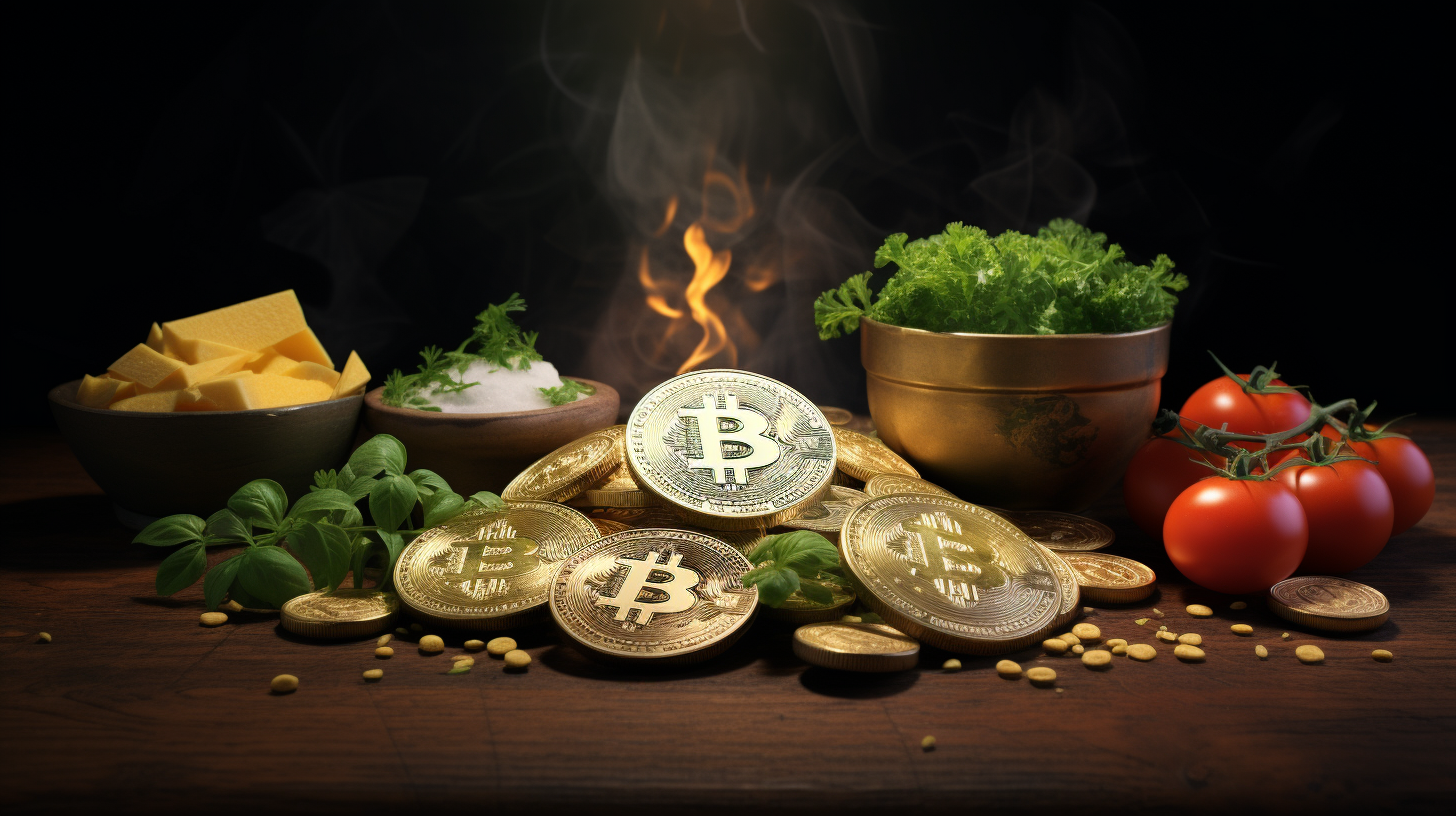Imagine strolling through the bustling aisles of your local grocery store. Shelves are lined with a colorful array of produce, a digital price tag flashing beside each item: payable in Bitcoin, Ethereum, or your altcoin of choice. Welcome to the world of Crypto Cuisine, where the future of food is inseparable from the encrypted pulse of cryptocurrency. It’s a revolutionary shift in the way we think about, purchase, and consume our food.
Here in the vanguard of the culinary world, every bite is part of a larger narrative—one where sustainability, technology, and finance meld in an unprecedented symphony. The cuisine is not merely about the consumption of edibles, but about participating in a shared economy, and reshaping the food industry with a decentralized flair.
‘To eat is a necessity, but to eat intelligently is an art,’ said Francois de La Rochefoucauld. This aphorism resonates more than ever in the era of Crypto Cuisine, where ‘intelligently’ also encapsulates the ethical and economic implications of our food choices.
From Blockchain Supply Chains to Digital Wallet Dining
Our previous exploration, ‘Encrypted Edibles: How Blockchain is Securing the Food Supply Chain’, cast light on the blockchain’s role in safeguarding the path food travels from farm to table. Today, we delve deeper into the blockchain’s culinary cousin: cryptocurrency.
The seamless integration of cryptocurrencies in the food industry is revolutionizing the dining experience at every level. Restaurants now curate menus based on real-time market data, adjusting prices for their dishes in accordance with the latest crypto trends. Food trucks are harnessing QR code technology to accept payments in a flash—literally one scan, and your gourmet burger is on its way, with the transaction secured on the blockchain.
Gone are the days of fumbling for fiat when the check arrives. A simple wave of your smartphone, and your digital wallet is debited. For restaurateurs, this means no more bank transfer fees, more direct customer relationships, and a treasure trove of data from which they can distill customer preferences and spending habits.
Feeding the Masses with Microtransactions
Crypto Cuisine isn’t just for the tech elite and the urban foodie. Microtransactions—tiny payments possible with cryptocurrency—are bringing down financial barriers and allowing more people to participate in the economy. Food vendors in developing regions are now able to sell their local delicacies to a global customer base. A street hawker in Lagos can sell his plantain chips to a crypto user in Los Angeles, as easily as serving a local customer.
This new culinary reality is spicing up the food industry with a zest for inclusion and utility. While the blockchain ensures the transaction is recorded transparently and securely, the speed and efficiency of crypto payments open doors to real-time international commerce for even the smallest of vendors.
Ingredient Tokenization and Recipe NFTs
Not just content with transforming transactions, the crypto boom has had chefs and food manufacturers cooking up new forms of ownership and authenticity. Ingredients are now being tokenized on blockchain platforms, providing assurance of origin and quality. Imagine sipping a cup of coffee which comes with a token, verifying it’s been sourced from fair-trade beans directly benefiting the hands that harvested them.
Recipes, too, are getting a taste of crypto innovation. Enter the world of Recipe NFTs: where a chef’s signature dish can be minted as a unique digital asset. This digital collectible represents more than the method—it embodies the culinary heritage of the dish and the personal story of its creator. Culinary artists can thereby establish their brand and gain a following, all while ensuring their original creations are recognized and compensated fairly.
With every forkful comes a side of data integrity and artistic respect, elevating the foodie experience to new heights.
A Menu of Challenges
However, it’s not all gastronomic utopia. The volatility of cryptocurrency poses pricing challenges for vendors and consumer doubts can boil over, particularly during bear market seasons. Furthermore, regulatory conundrums stew as governments scramble to create legislations for businesses that reside both physically and on a decentralized ledger.
Education is key to addressing these hurdles. As more people understand how to safely navigate cryptocurrency’s waters, the smoother the transition into a world where Crypto Cuisine is as commonplace as a hamburger stand.
Closing Thoughts
So, whether you are a connoisseur of fine dining or simply looking to grab a bite on the go, the fusion of cuisine and cryptocurrency cannot be ignored. In this delectable landscape, every transaction is a step toward a more inclusive and efficient food eco-system. Crypto Cuisine is not just the next revolution in the food industry—it’s a paradigm shift in the way we consume, appreciate, and exchange value at the most fundamental level of human necessity: our nourishment.
And so we ask, what’s on the menu for tomorrow? Just like a masterful dish, time will blend the ingredients of innovation, technology, and finance to yield a result that is sure to tantalize the taste buds of our economy.
